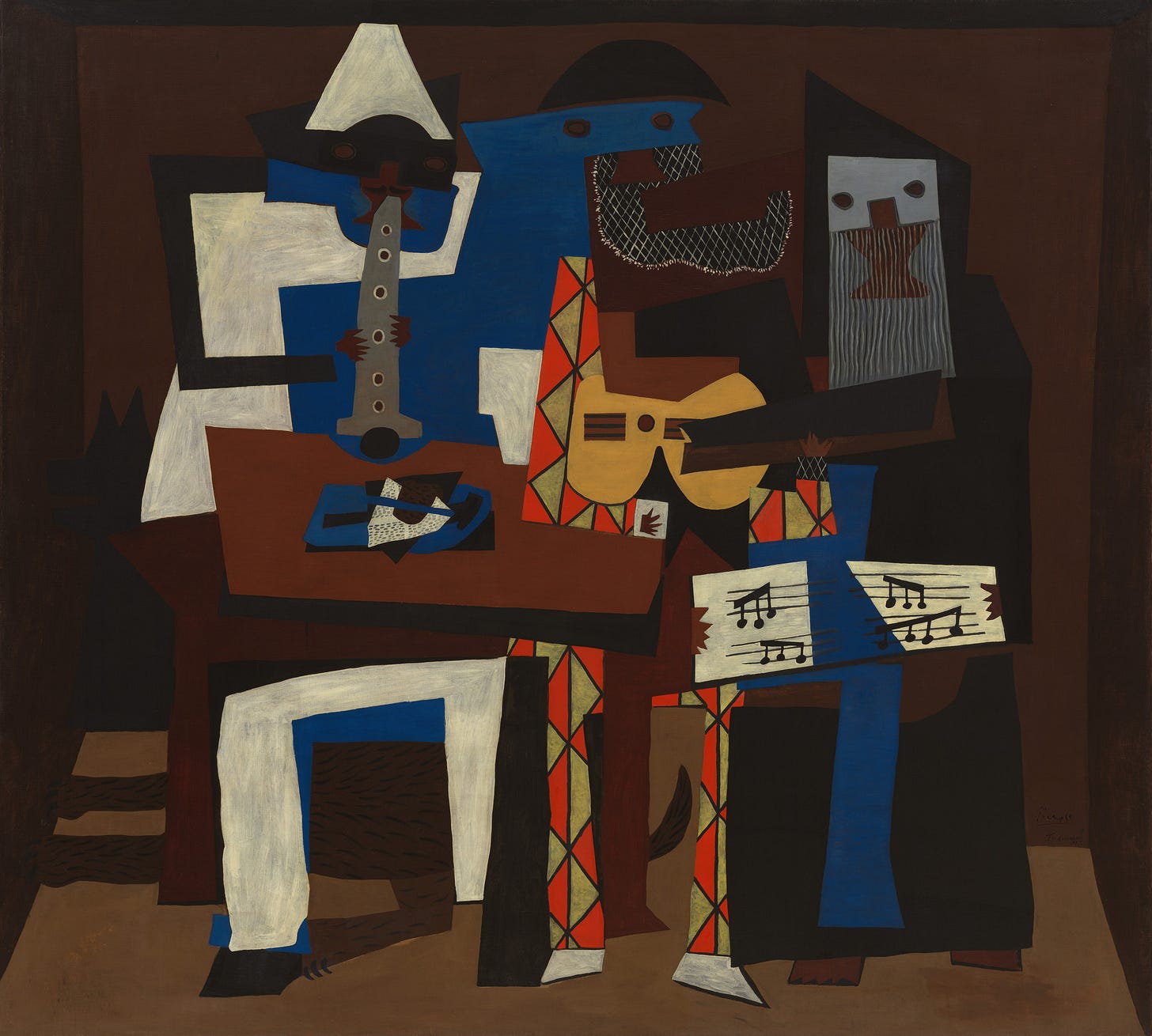What about purely conceptual art?
Artworks made out of thought
Art has had a large impact on me. Even though I cannot describe exactly how I have been impacted, I can feel it somehow. Yes, art has the ability to make me feel in ways I have never felt from non-art.
Interested not only in feeling, but also conceptualizing, I ask “What is art?” This question interests me because it allows me to explore what art means, both to me and to others, and also because it allows me to explore what art could mean that it does not yet.
I have come to understand art as a source of currents that flow into people non-conceptually. Listening to Toward the Sea, a work of art by Tōru Takemitsu, something within me changes—I do not know what, I do not know why, but I know that. The music leads me, through its currents, to experiment (perhaps in effort to understand), to imagine, and to act, even though I do not conceptualize it.
The same can be said of paintings, of installations, of poetry, of sculpture, cuisine, and so many more forms of art. However, each of these works of art have media through which the art-form is registered by the senses. Toward the Sea, for example, can be accessed by listening (sense) to musicians perform (media) the piece (form) as designed by Takemitsu.
Interested not only in sensation, but also conceptualizing, I ask “What about purely conceptual art?” This question interests me because it allows me to explore possibilities of art beyond those usually understood, and also because as it allows me to bring art into new domains that I find enthralling.
Conceptual art, as a term, is already employed. It refers to artworks that have interesting conceptual bases which are implemented through various media. What I am interested in here is purely conceptual artworks, which use concepts as their medium.
Without any examples to think about, such an artwork could seem impossible. One piece, which I give the tentative name Virus, is the concept that propagates through minds, perhaps alike a concept that invades the mental capacity of people. The content of the thought is self-reflective: it is this very thought that thinks about itself as the thought that it is, and also thinks about its capability of being replicated in other minds. When I describe this thought to you, the reader, you may find yourself with this very same thought, which now occupies even more minds!
I do not think it is unfathomable to view Virus as a piece of art. Perhaps not a particularly great one (though I quite enjoy it). I have specified its form, and the medium is thought. What is different is that there does not seem to be any “essential” relation with the senses, like paintings have with vision, or music with hearing.
Now, poetry can be seen as coming close to purely conceptual art. Both involve bringing something to mind, particularly language. But where the medium of purely conceptual art is concepts, the medium of poetry is language. You cannot reword a poem and have the same poem, but you can reword a conceptual artwork and have the same piece.
Another example, tentatively titled Point Vanishing, is quite a perplexing one. First, take a moment to feel the piece, as the more you read on, the less you will be able to access it. The concept this time is the non-conceptualization of itself. As soon as you have the concept in mind, you are not witnessing it as itself as an artwork. But when you are not conceptualizing it, you witness it—though in what sense I do not quite know.
These two pieces might strike you as interesting “thought experiments.” But there is a crucial difference: thought experiments, in philosophy, are conducted in order to test intuitions and logical consequences for a productive end, whereas these examples do not aim toward any kind of productivity. When I create purely conceptual art, I engage in play.
All of this discussion makes my initial claim of art suspicious, that artworks are sources of currents that flow non-conceptually. How could “purely conceptual art flow non-conceptually?” However, I do not think that purely conceptual artworks are exceptions to this claim. While initially conceptual, the ways in which purely conceptual artworks create currents are the same as those present in other art forms. The flow is not based on comprehension of ‘why’ some fact is the case, like, for instance, why every number has a prime factorization. That kind of understanding creates currents of number theory that are conceptual in nature. The currents of purely conceptual artworks inspire are different, and are gained through inspiration, perplexity, and beauty. They are not founded in comprehension.
My point in bringing up purely conceptual art is not to establish it as a revolutionary art form. It is not to demonstrate how versatile art can be, nor how far expression can extend. It is to pose questions that are relevant to the conditions of existence and see where they lead—the unknown.





I really love that you included cuisine in your list of art forms! It talks to my heart!! Could a “blue note” be considered conceptual? Could jazz, being both defined with parameters and rules but also free and ephemeral be conceptual? Thank you for this thought provoking article.
I finally had a chance to re-read this. Very imaginative and thought provoking about conceptual art. However, I could not understand the last sentence of the essay where you say it is linked to understanding of existence.